Abstract
1. The electrical activity of the small intestine of conscious dog, recorded by means of chronically implanted electrodes, was related to the transit time estimated by phenol red infusion and its propagation observed after a single or double transection and following either isolation or removal of a 50 cm jejunal loop. 2. In the fasted dog, the activity was characterized by the propagation of myoelectric complexes at a velocity of 4 cm/min during which the mean transit time averaged 13 min/m. About 2/3 of these complexes were seen to pass beyond a single section and anastomosis of the jejunum with a delay of 15 min. This number was reduced to 1/3 and the delay doubled when a second section was performed 50 cm distally. 3. In dog with an isolated jejunal loop, most of the myo-electric complexes were seen to pass from the proximal intestine to the loop and then to the intestine beyond the sit of anastomosis within 37 min. Some complexes however passed directly through the anastomosis within 30-32 min, affecting or not the loop. Others started on the loop and/or on the intestine beyond the anastomosis. Finally, the total number of complexes recorded on the distal jejunum was greater than on the duodenum, an effect which disappeared after removal of the isolated loop. 4. The propagation of the complexes occurred at a lower velocity after denervation of a jejunal segment in situ but was arrested in the case of an isolated-denervated jejunal loop. 5. It is concluded that continuity of structures in the bowel is essential for the propagation of a myo-electric complex which is stopped and replaced by another complex at the level of an anastomosis, the number os complexes reorganized beyond an anastomosis and their velocity of propagation depending upon both intrinsic and extrinsic neural influences.
Full text
PDF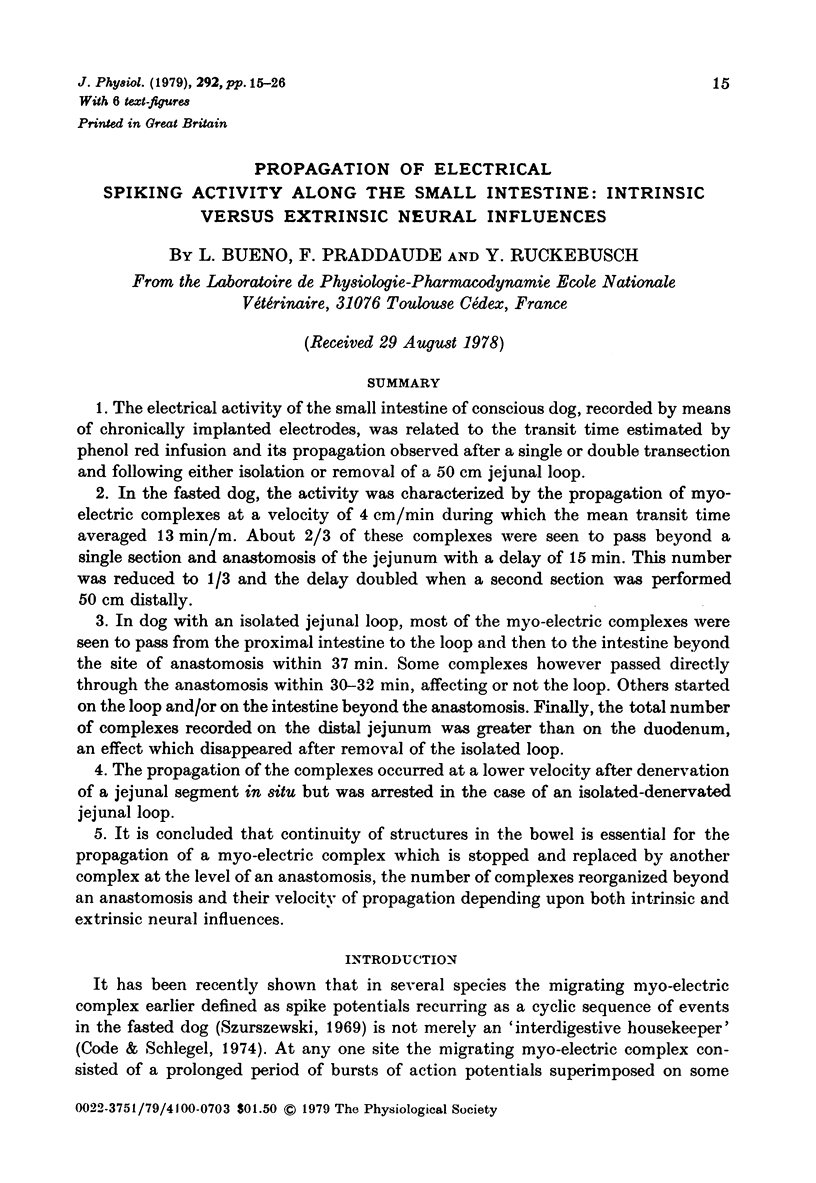

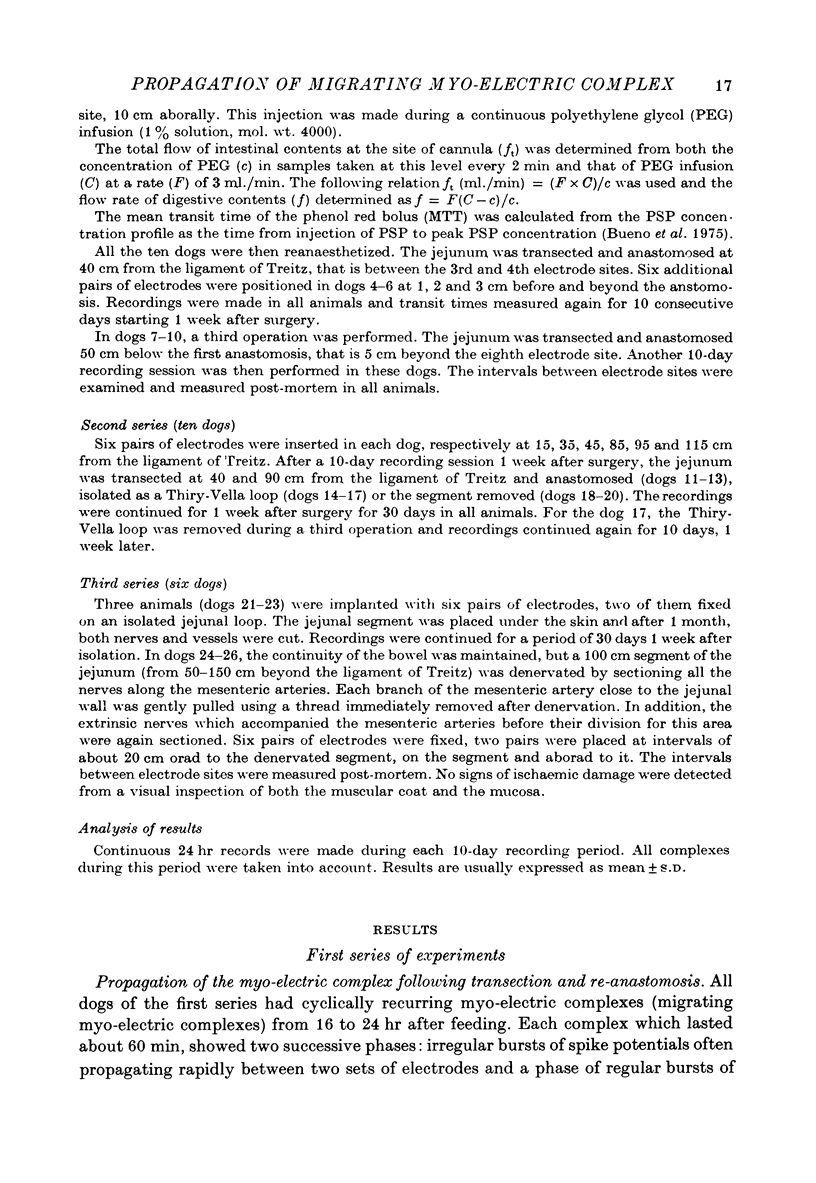

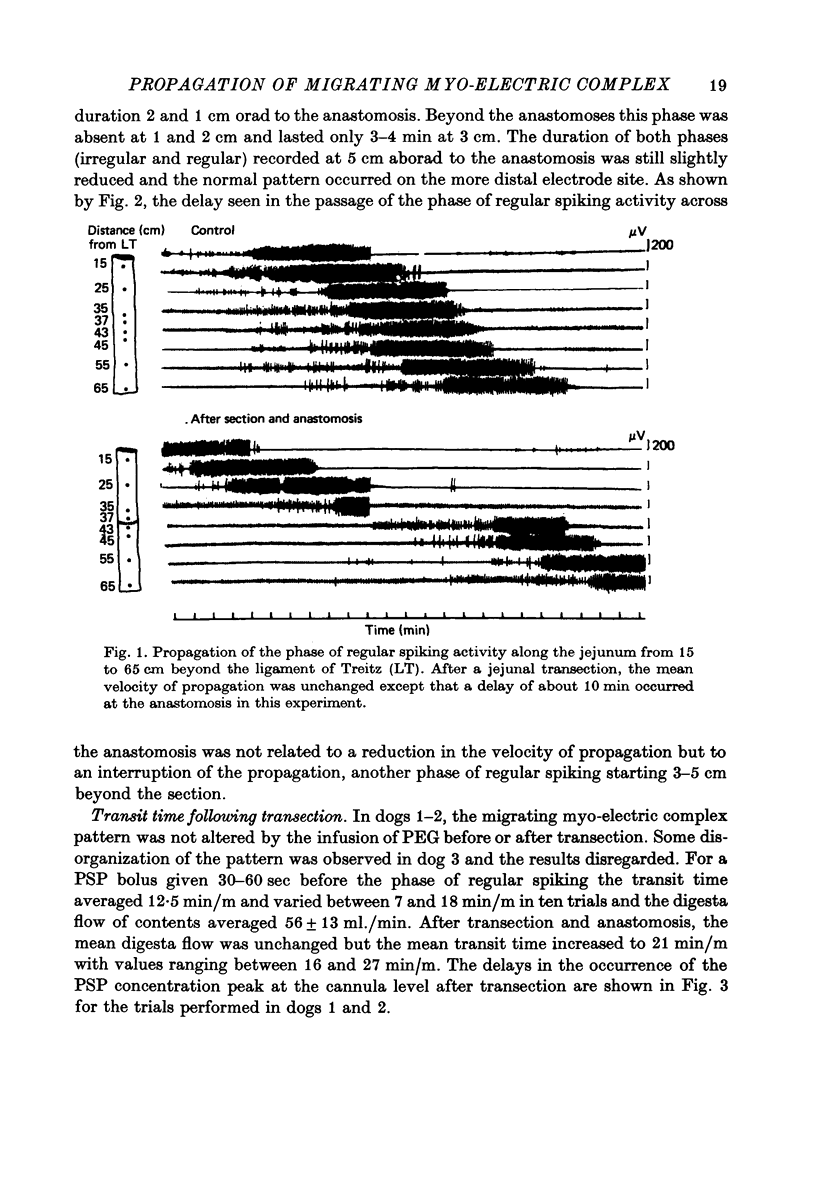
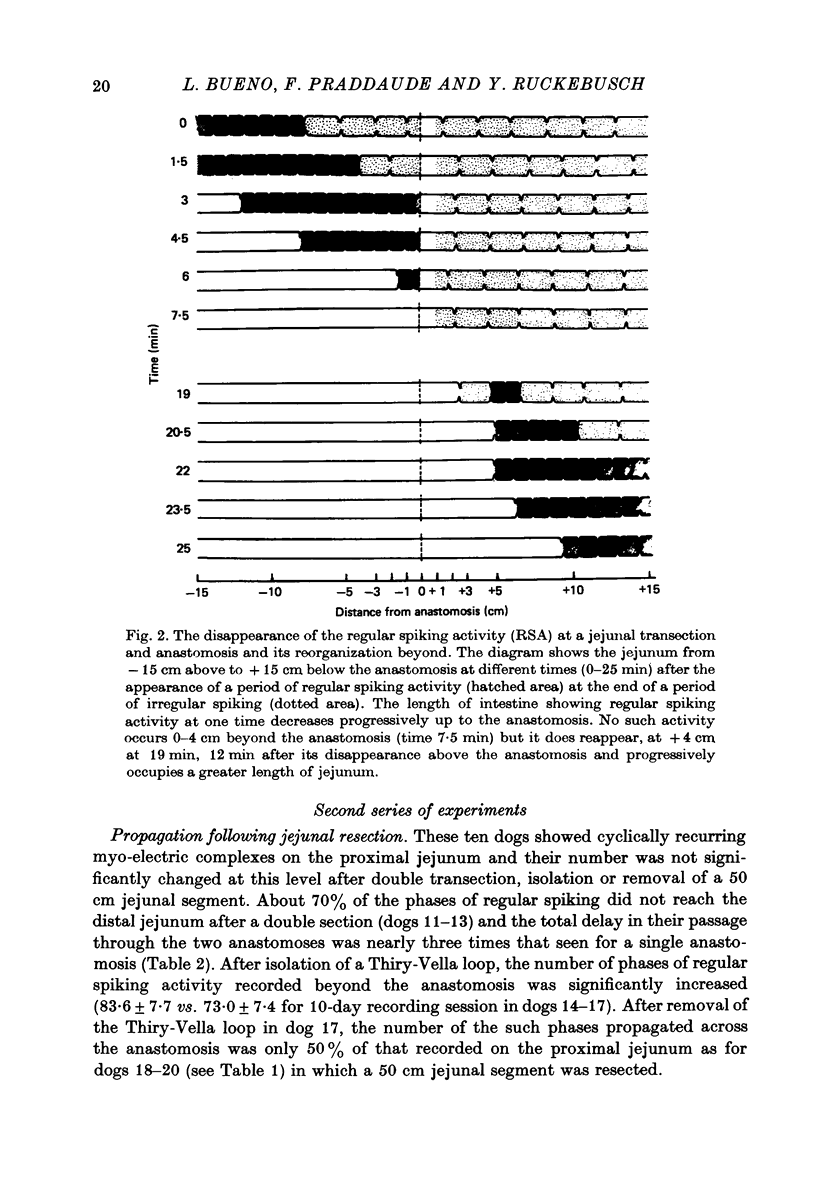
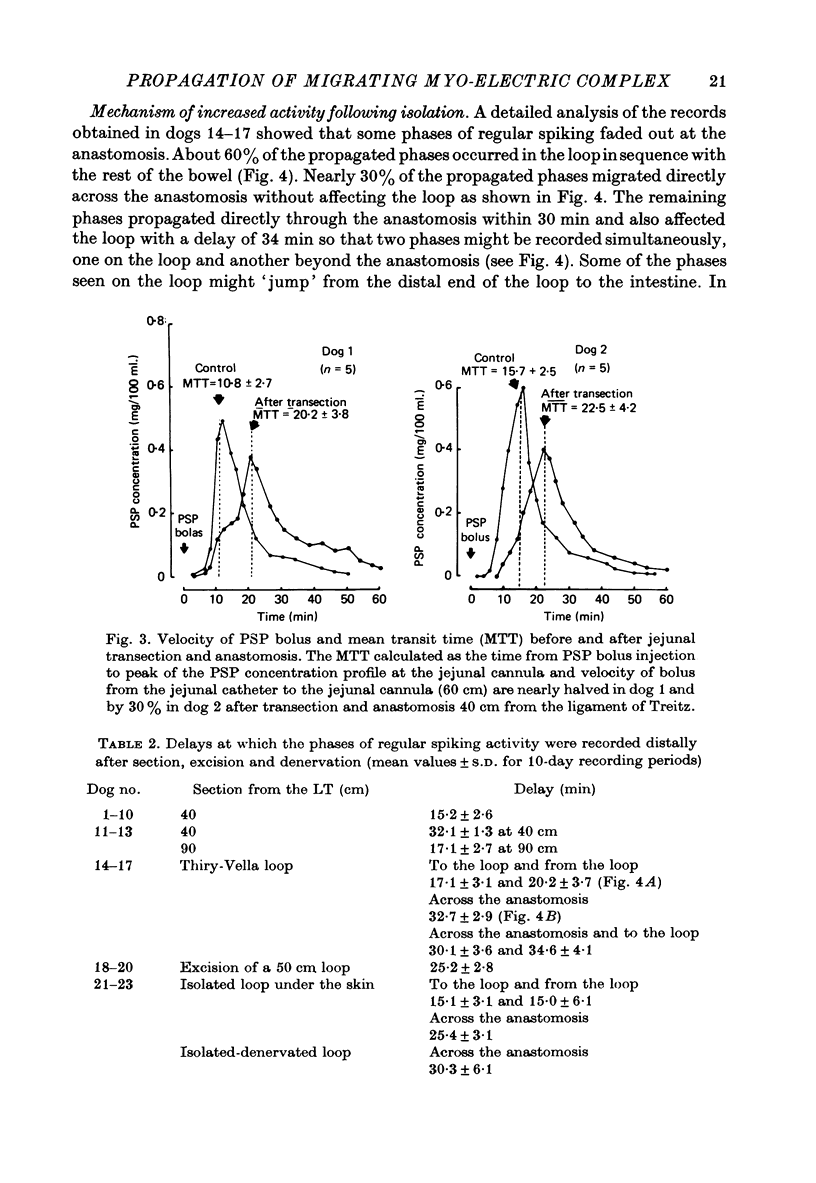
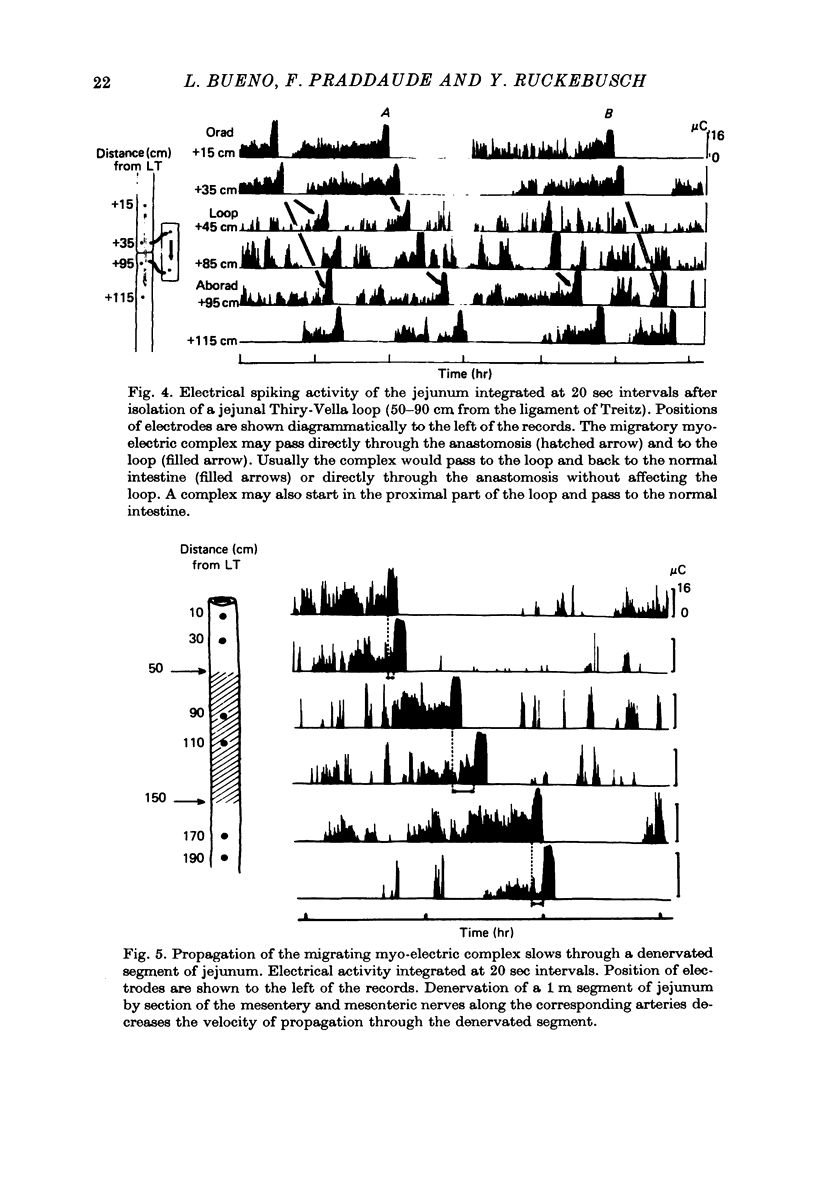
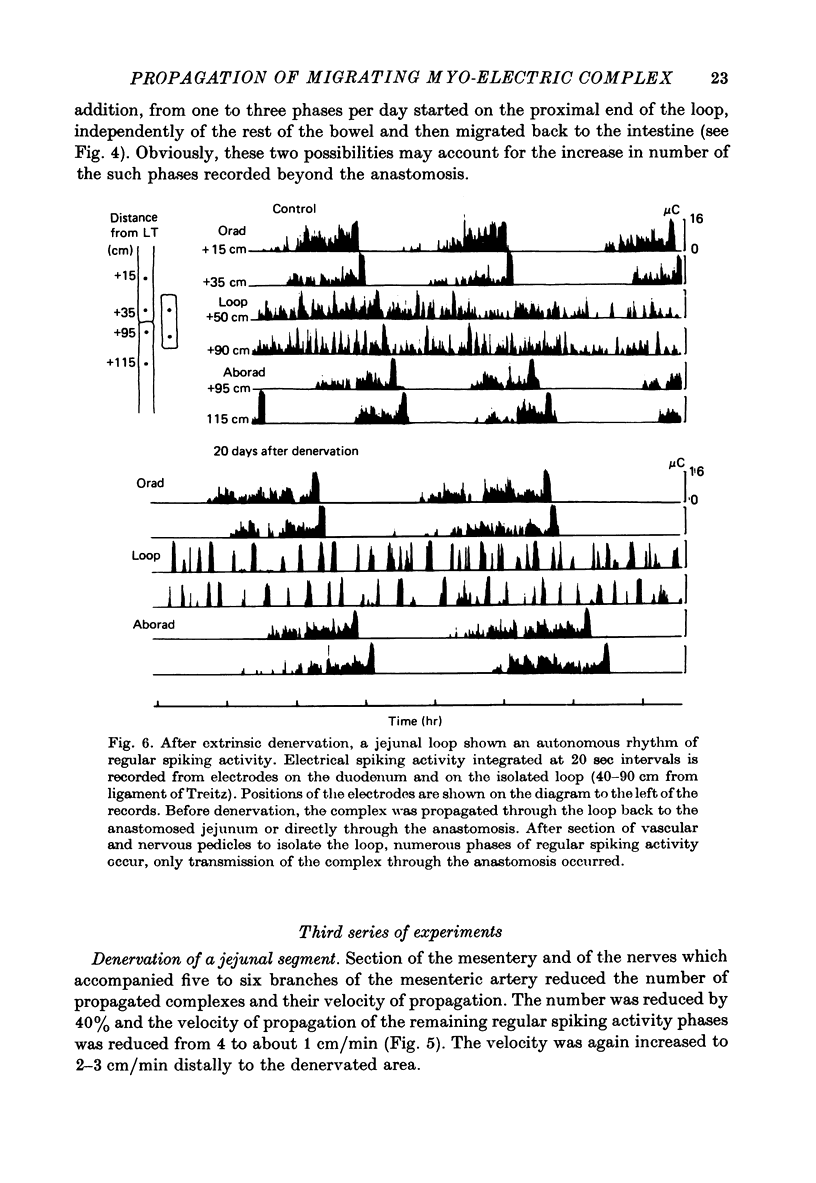
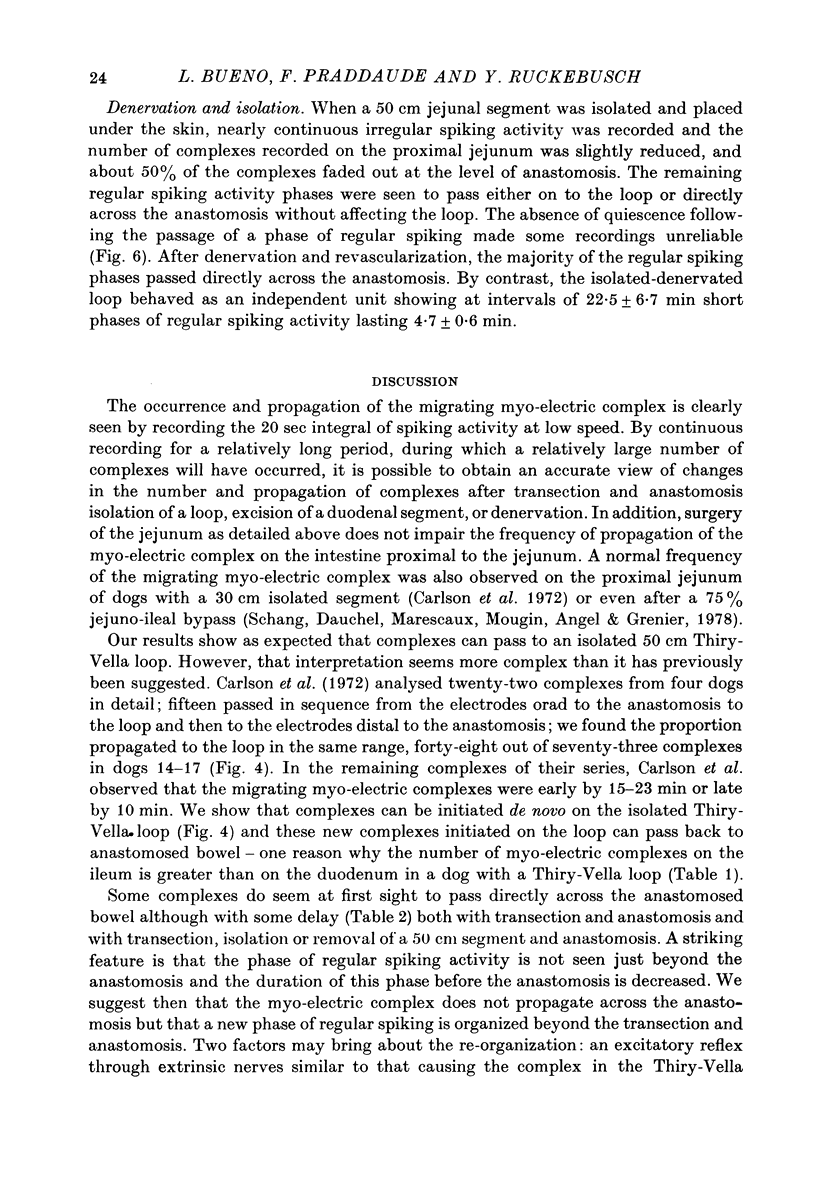
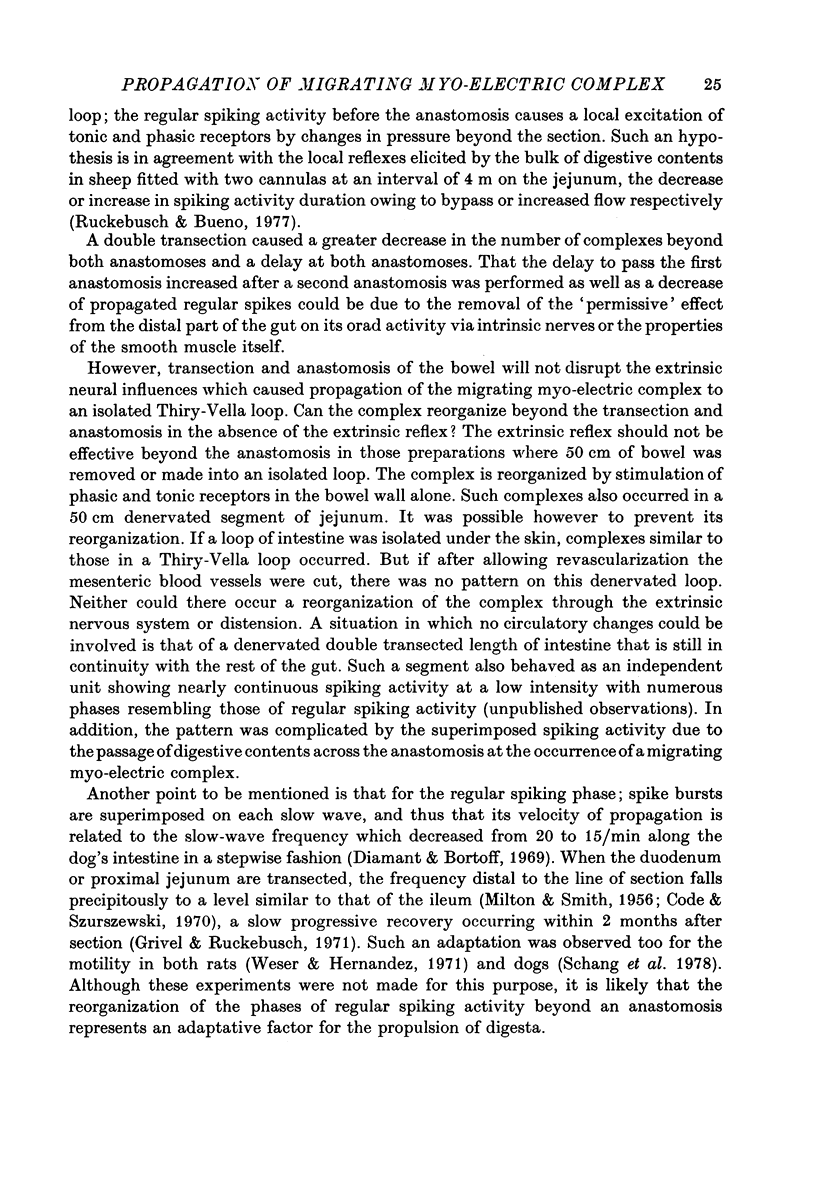
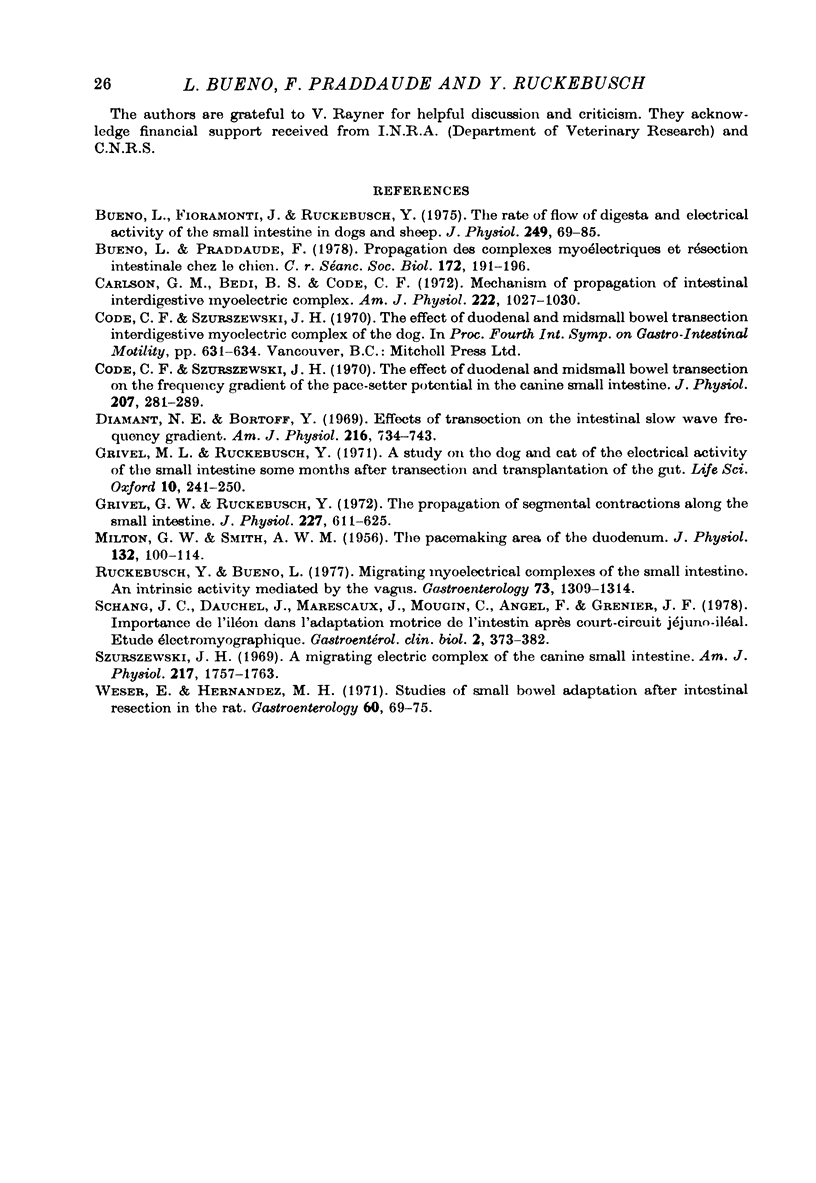
Selected References
These references are in PubMed. This may not be the complete list of references from this article.
- Bueno L., Fioramonti J., Ruckebusch Y. Rate of flow of digesta and electrical activity of the small intestine in dogs and sheep. J Physiol. 1975 Jul;249(1):69–85. doi: 10.1113/jphysiol.1975.sp011003. [DOI] [PMC free article] [PubMed] [Google Scholar]
- Bueno L., Praddaude F. Propagation des complexes myoélectriques et résection intestinale chez le chien. C R Seances Soc Biol Fil. 1978;172(1):191–195. [PubMed] [Google Scholar]
- Carlson G. M., Bedi B. S., Code C. F. Mechanism of propagation of intestinal interdigestive myoelectric complex. Am J Physiol. 1972 Apr;222(4):1027–1030. doi: 10.1152/ajplegacy.1972.222.4.1027. [DOI] [PubMed] [Google Scholar]
- Code C. F., Szurszewski J. H. The effect of duodenal and mid small bowel transection on the frequency gradient of the pacesetter potential in the canine small intestine. J Physiol. 1970 Apr;207(2):281–289. doi: 10.1113/jphysiol.1970.sp009061. [DOI] [PMC free article] [PubMed] [Google Scholar]
- Diamant N. E., Bortoff A. Effects of transection on the intestinal slow-wave frequency gradient. Am J Physiol. 1969 Apr;216(4):734–743. doi: 10.1152/ajplegacy.1969.216.4.734. [DOI] [PubMed] [Google Scholar]
- Grivel M. L., Ruckebusch Y. A study in the dog and cat of the electrical activity of the small intestine some months after transection and transplantation of the gut. Life Sci I. 1971 Mar 1;10(5):241–250. doi: 10.1016/0024-3205(71)90311-0. [DOI] [PubMed] [Google Scholar]
- Grivel M. L., Ruckebusch Y. The propagation of segmental contractions along the small intestine. J Physiol. 1972 Dec;227(2):611–625. doi: 10.1113/jphysiol.1972.sp010050. [DOI] [PMC free article] [PubMed] [Google Scholar]
- MILTON G. W., SMITH A. W. The pacemaking area of the duodenum. J Physiol. 1956 Apr 27;132(1):100–114. doi: 10.1113/jphysiol.1956.sp005505. [DOI] [PMC free article] [PubMed] [Google Scholar]
- Ruckebusch Y., Bueno L. Migrating myoelectrical complex of the small intestine. An intrinsic activity mediated by the vagus. Gastroenterology. 1977 Dec;73(6):1309–1314. [PubMed] [Google Scholar]
- Schang J. C., Dauchel J., Marescaux J., Mougin C., Angel F., Grenier J. F. Importance de l'iléon dans l'adaptation motrice de l'intestin après court-circuit jéjuno-iléal. Etude électromyographique. Gastroenterol Clin Biol. 1978 Apr;2(4):373–382. [PubMed] [Google Scholar]
- Szurszewski J. H. A migrating electric complex of canine small intestine. Am J Physiol. 1969 Dec;217(6):1757–1763. doi: 10.1152/ajplegacy.1969.217.6.1757. [DOI] [PubMed] [Google Scholar]
- Weser E., Hernandez M. H. Studies of small bowel adaptation after intestinal resection in the rat. Gastroenterology. 1971 Jan;60(1):69–75. [PubMed] [Google Scholar]


